Pests and Diseases
here you will find present photographs of several pests and diseases of honey bees and some examples of small hive beetle traps. These photographs are provided for the purpose of education and training and are also suited for PowerPoint presentations.
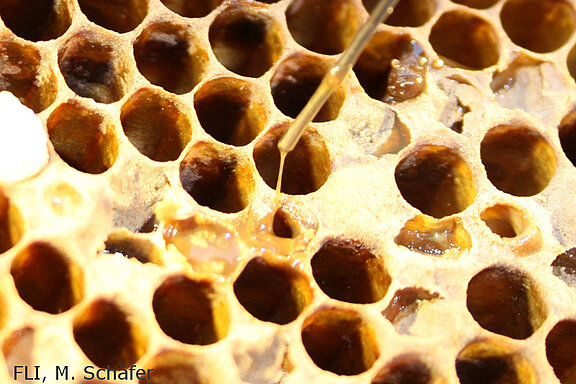
American foulbrood
So far, this worldwide distributed bacterial disease has only been detected in honey bees, Apis mellifera. Only the brood of the honey bee is affected, as only young larvae are susceptible to infection; adult bees are resistant to the pathogen. Economic damage is however considerable, as the disease leads to the loss of entire bee colonies and has a high potential to spread due to its highly resistant spores that are produced by its etiological agent Paenibacillus larvae in enormous numbers. AFB does not represent a human health risk.
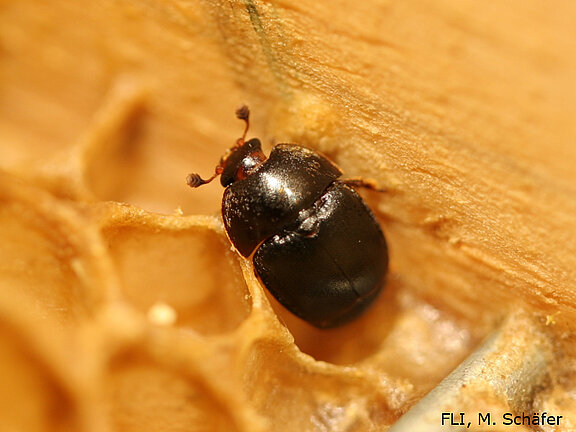
Small hive beetle (Aethina tumida)
Under certain conditions small hive beetles can multiply to huge numbers within infested colonies (mass reproduction). They feed on brood, honey and pollen, adult beetles even are able to induce trophallaxis from the bees. If mass reproduction occurs, the larvae destroy combs, and their faeces cause fermentation and spoilage of the honey. In this case treatment of the surrounding soil must be considered, as pupation tales place in small chambers in the ground.
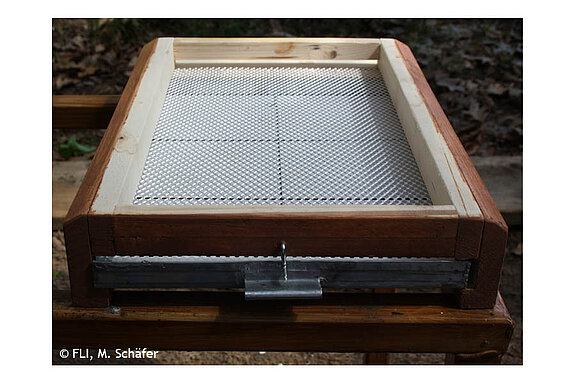
Hive beetle traps
Within the hive the small hive beetle is chased by the bees and tries to find shelter in cracks and gaps that are not accessible to the bees. Most hive beetle traps take advantage of this behaviour and have entrances that are just big enough for adult beetles, but too small for bees. The traps are filled with substances which kill the beetles or liquids (mostly oil) in which the beetles drown. Traps for different positions within the bee hive are commercially available. As bees tend to seal the entrances of the traps with propolis, the traps must be checked regularly and, if necessary, cleaned or replaced.
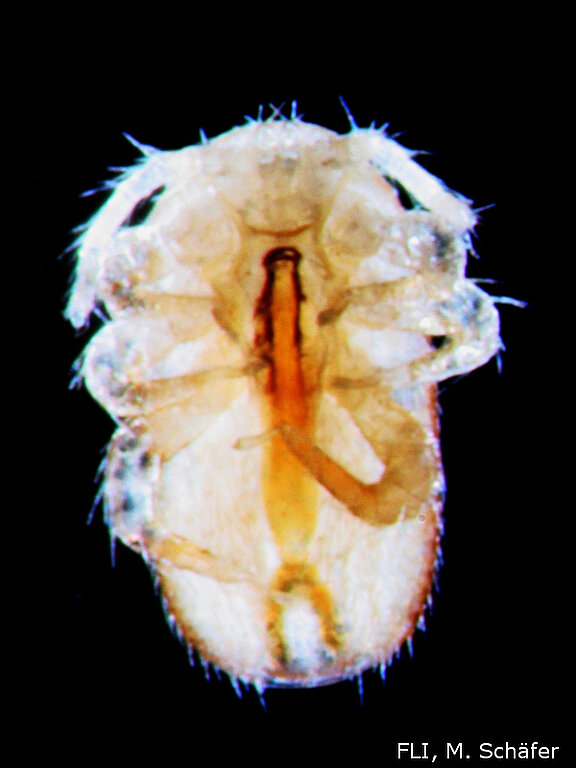
Tropilaelaps mite
In colonies with high infestation rates, Tropilaelaps mites cause symptoms similar to Varroa destructor. Infestation of bee larvae and pupae causes brood malformation, death of brood and bees, and subsequent colony decline. Left untreated, infestation by Tropilaelaps mites might kill colonies of Apis mellifera within one year.
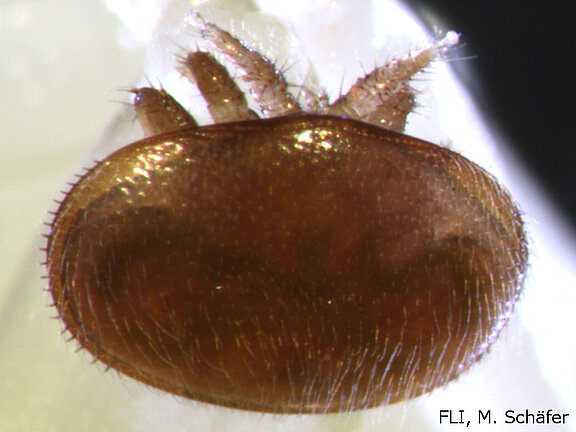
Varroa mite
Varroa destructor (family Varroidae) is approx. 1.1 mm long and 1.6 mm wide. It is an external parasite of honey bees (Apis mellifera and Apis cerana) that develops and reproduces inside the capped brood in the bee hive. Infestation of European honey bee colonies with this mite species is called varroosis (formerly varroatosis). Varroa destructor is assumed to be the most important pest of bees worldwide.
Links
Further information and sometimes very good pictures or videos can be found under the following links:
- APIS e.V. Verein zur Förderung der Bienenkunde der Landwirtschaftskammer Nordrhein-Westfalen (http://www.apis-ev.de/)
- BeeBase Gallery (http://www.nationalbeeunit.com/gallery/index.cfm)
- Beegroup / Bienenforschung Würzburg e.V. (www.beegroup.de)
- DLR Westerwald-Osteifel, Fachzentrum Bienen und Imkerei, Mayen (www.bienenkunde.rlp.de)
- Institut für Bienenkunde (http://de.institut-fuer-bienenkunde.de)
- Institut für Bienenkunde Celle (www.bieneninstitut.de)
- Institut für Bienenkunde und Imkerei an der Bayerischen Landesanstalt für Weinbau und Gartenbau in Veitshöchheim (http://www.lwg.bayern.de/bienen/)
- Institute for Bee Protection, Julius Kühn-Institut (https://www.julius-kuehn.de/en/bee-protection/)
- Institute for Bee Research Hohen Neuendorf e.V. (https://www2.hu-berlin.de/bienenkunde/en/index.php?id=223)
- Landesanstalt für Bienenkunde, Universität Hohenheim (https://bienenkunde.uni-hohenheim.de/en/73736)
- The Bee Informed Partnership (https://beeinformed.org/)
- Tofilski A. (2012) Honey bee. (http://www.honeybee.drawwing.org)
- Understanding Bee Anatomy by Dr. Ian Stell (www.understandingbeeanatomy.com)
- Incident investigation of bee poisoning, Julius Kühn-Institut (https://www.julius-kuehn.de/en/bee-protection/fields-of-activity/incident-investigation-of-bee-poisoning/)

